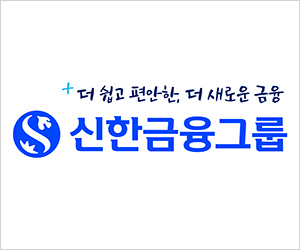
What if financial institutions offer customized loans even before worrying that “can I borrow money?” This is the future lending market the Rayon blockchain project envisions. Fintech startup Finda, which won fame as a platform recommending financial products, has come up with Rayon to release a service focusing on loans through the reverse initial coin offering (ICO). So far, Finda has engaged in recommending financial products to users based on information it obtained through cooperation with financial institutions. That is, the company has played the role of a “middleman” bridging financial institutions and customers. Given that blockchain is a decentralized technology aiming to remove the middleman, why did Finda jump on the crypto bandwagon?
“From the foundation of Finda, we aimed to maximize transparency and thought that loan products needed transparency most,” said Rayon co-CEO Lee Hye-min, adding that ensuring fairness in recommending loan products is surely limited. “We launched the Rayon project because blockchain can maximize transparency although it was different from what we used to do. Finda has dealt with investment vehicles and credit cards besides loan products but Rayon focuses on lending.”
Service protocol focusing on loans
Rayon is a service protocol bridging the blockchain mainnet and a decentralized application (DApp). It functions as an interface to enable DApps offer service effectively on the mainnet. Rayon offers smart contract, data-based loan matching algorithm, apps for lending institutions and data collection tools. “This is intended to provide software development kits and other infrastructures so that service providers can build marketplaces exclusive for loans. Our existing partners will have priority,” Lee said.
The first DApp to be released through the Rayon protocol would be “Finda” and the first service would be “blockchain-based counteroffer loan products” that apply blockchain technology to existing lending-related services. The service begins with uploading information by interlocked financial institutions if users enter brief data. Then users can receive RYN tokens in compensation for data input. Afterwards information is filtered out in accordance with standards set by lending institutions, which would then offer loans after confirming the information. This process is done transparently in the form of a smart contract.
“Loan providers will be expanded to branches as well as to head offices of financial institutions. Cryptocurrency loans may be possible in the long term,” Lee said. “Currently, there are many projects related to cryptocurrency loans but none has extended loans actually. We will be in the vanguard of forming partnerships if some projects dare to lend.”
New user experience needed
Hopes are high, but so are challenges. If Rayon is to be a functioning service protocol, it has to pave the way for DApps to develop proper services. To this end, Rayon plans to provide DApp developers with Finda’s networks involving financial institutions and templates that would enable the development of app settlement models. Incentives will be offered to developers that form partnerships earlier. Lee said, “The Rayon protocol will be open to any services that manage credits.”
It goes without saying that Finda, the first DApp, has to suggest a new user experience (UX) that has never been felt in existing peer-to-peer loans. “This is not intended simply to bridge lenders and borrowers but to let lenders arrange loans for borrowers,” Lee said, adding that the UX will be completely different because borrowers can choose loan products in person and no longer need to worry about loan requirements.
Protocol service due early next year
What the Rayon project aspires for most eagerly is to provide borrowers with opportunities to select loan products directly. “We hope that all service users will be able to choose loan products suitable for them. We want to create an environment in which even those with a limited credit history can opt for favorable loan products,” Lee said.
To achieve the goal, it’s most important to think from the perspective of users. This is why Rayon has chosen Kakao’s public blockchain platform Klaytn as the mainnet. Lee said, “Our Finda users must be able to use the service naturally without going through an entry process of new technologies. We will make users feel convenience without being conscious of blockchain technology being applied.”
Klaytn might suit what Lee thinks, considering that it is a platform making much of the UX. Rayon plans to release its protocol service in the first quarter of next year in time with the launch of the Klaytn mainnet and to list the RYN token on a crypto exchange so that it can be converted into a fiat currency. “Rayon is an English word meaning a fiber and it represents our wish to weave lenders and borrowers. We will launch our service nicely to live up to its name,” Lee said.
/Hyunyoung Park Reporter hyun@decenter.kr
- 박현영 기자
- hyun@decenter.kr








![[이번주 코인스케줄]ARB 등 락업 해제, 토큰 2049·비트코인 반감기도](https://newsimg.sedaily.com/2024/04/15/2D7X8390NO_1_s.png)

![[점심브리핑] 이란, 이스라엘 본토 공습…가상자산 가격 폭락](https://newsimg.sedaily.com/2024/04/15/2D7X7KAWDD_1_s.png)


![[도예리의 NFT 레이더]성수동에 'NFT 햄버거집'이 생긴 이유](https://newsimg.sedaily.com/2024/03/21/2D6Q0WPYBT_1_s.jpg)
![[점심브리핑] 바이낸스US, 前 뉴욕 연준 임원 합류](https://newsimg.sedaily.com/2024/04/17/2D7Y4EB722_1_s.png)








